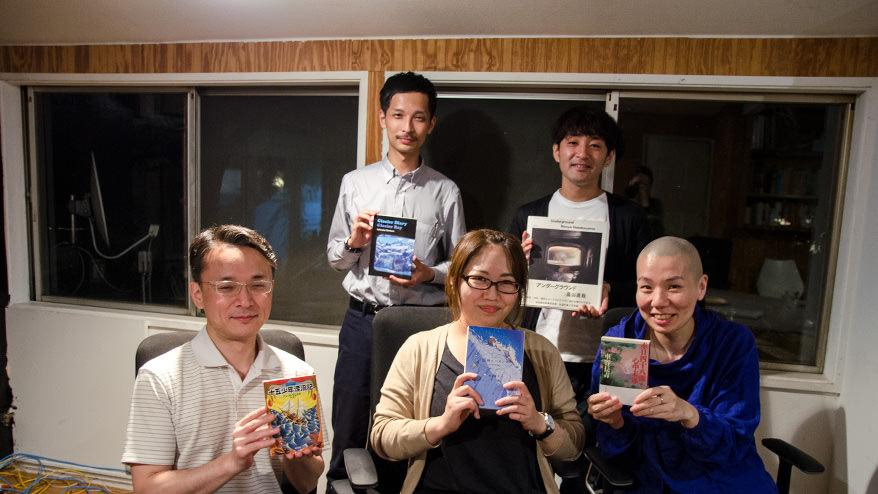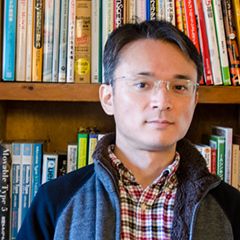図書委員の村上です。
今年は雨があまり降らない梅雨ですね。
これからの夏本番に向けて、水不足が少し心配です。
今回は雨乞いの気持ちもこめて、海でも川でも「水」がでてくる本をテーマに読書会を行いました。
読書のお供は、テーマの「水」にちなんでゼリーにしました。金魚や青もみじが浮かんで、見た目も涼しげです。
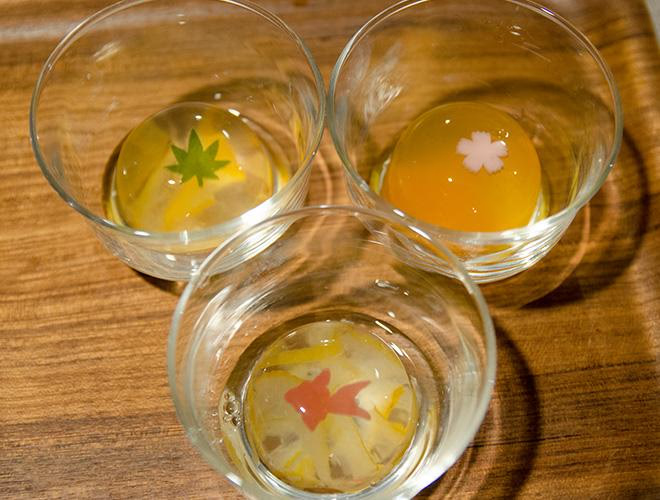
それでは読書会、スタートです!
発表タイム
40分間の読書タイムを終えたら、ひとり5分間でその本を紹介します。
-
地下5メートル。ひっそりと流れる渋谷川の世界
畠山 直哉(著)『アンダーグラウンド』(紹介者 半田 貴功) -
おしゃべりな貝が身体に住み着いた 海洋生物学者のおとめちゃん
市川 春子(著)『25時のバカンス』(紹介者 乾 椰湖) -
魂がのたうちまわる 遅咲きの作家の物語り
車谷 長吉(著)『赤目四十八瀧心中未遂』(紹介者 和田 亜也) -
忘れた気持ちを思い出す 少年たちが海で繰り広げるサバイバル
ジュール・ヴェルヌ(著)『十五少年漂流記』(紹介者 村上 伊左夫) -
カヤックで一人氷河を目指す 写真家の撮影日記
石塚 元太良(著)『氷河日記 グレイシャーベイ』(紹介者 羽賀 敬祐)
地下5メートル。ひっそりと流れる渋谷川の世界
『アンダーグラウンド』(紹介者 半田 貴功)

畠山 直哉 (著)『アンダーグラウンド』メディアファクトリー (2000/06)( Amazon )
-
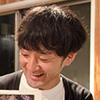 半田
半田 -
水がテーマということで、畠山直哉の『アンダーグラウンド』いう写真集を持ってきました。渋谷に川が流れてるのって知ってますか?駅前から代官山の方に歩くと、昔は東横線沿いに流れてたんですけど、今は地下にあって、東横線沿いの地下に渋谷川という川が流れているんです。その地下の川で写真を撮った作品です。
途中途中、暗渠になっていて、下水道といっていいくらい汚い感じで、光もなくただただ闇の中を撮影してるんです。闇の世界で、唯一光ってるのが、この人が持っていった三脚のストロボ一燈のみ。本当に真っ暗な闇の中なんです。
闇の中で一瞬光ったときに見える形態とか、そこにいる生物を写してるんですけど、こんな闇の中にも世界はあるんだなと思って。ちょっと鍾乳洞的のような感じで、渋谷の地下たった5m位のところにこんな世界が広がってるというのが驚きでした。ちょっと宇宙っぽい感じの写真もあったりします。人工の油が流れてて、その様子も結構きれいなんです。
調べたんですけど、渋谷川は鉄分が多くて渋色っていう独特の赤茶色の色をしてるみたいで、そこから渋谷の渋っていうようになったらしいです。 カビの写真もあって、それはネズミの糞に付くカビらしくて、これは山口県の秋芳洞という鍾乳洞にも同じようなものがあるらしいんです。その話もいいなと思って。
畠山直哉さんは、採石場の爆破の瞬間とか工場とか都市の形態を撮る人で、着眼点と、見せ方がうまいというか、こういう写真撮れないなと思いながらいつも見てます。
今、渋谷を再開発していて、来年には商業施設ができて川もそれにともなってきれいにするみたいです。これは2000年くらいの作品なんですけど。もしかしたら歴史になってしまう作品かもしれないですね。
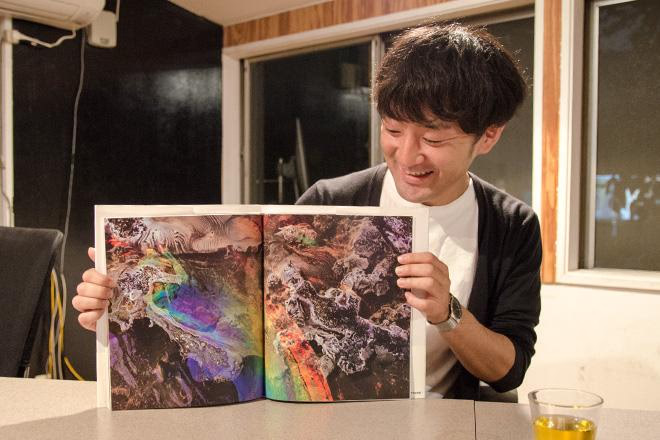
-
 村上
村上 -
この写真って普通に現像してるんですか?加工とかしてあるのかな。どうやって撮ってるんだろう。
-
 半田
半田 -
加工はしてなくて。フィルムじゃないかな。シャッターを切った瞬間、ストロボが開くように連動させて、本当に一瞬の光で撮ってるんだと思います。
-
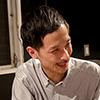 羽賀
羽賀 -
いろんな色の写真がありますけど、実際に自分の目で見たら、めちゃくちゃ汚いんでしょうね。
-
 半田
半田 -
確かに、臭いはすごいと思いますよ。コウモリもいるみたいで、他にも魚とか、そこにいる生物が写っていたりするんです。いやーすごい世界ですよ。
おしゃべりな貝が身体に住み着いた
海洋生物学者のおとめちゃん
『25時のバカンス』(紹介者 乾 椰湖)
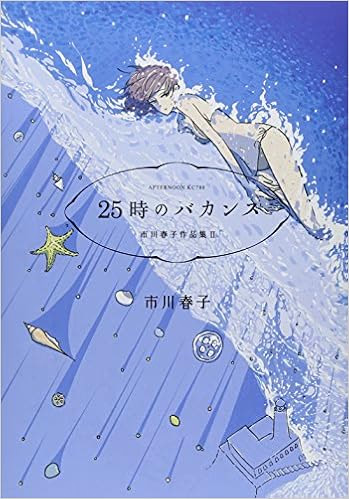
市川 春子 (著)『25時のバカンス』講談社 (2011/9/23)( Amazon )
-
 乾
乾 -
『宝石の国』という作品が有名な市川春子さんの短編集、『25時のバカンス』という漫画をもってきました。『25時のバカンス』というお話の他にも、あと2つ、お話が入ってます。
海の絵が表紙なんですけど、水着を着てるのは主人公の「おとめちゃん」。深海生物の研究者です。おとめちゃんはある日、深海生物の研究所で研究していた貝を食べてしまうんです。そして貝が身体に住み着いて、身体の一部になってしまう。
その様子をカメラマンの弟に25時に海に来て撮影してほしい、ということでこのタイトルになってるみたいです。おとめちゃんの身体で貝たちが共存しながら、お話をしたりするんですが、その様子がとてもかわいいんです。
弟と貝たちの初対面のシーンでは、貝たちがおとめちゃんの身体から、「きゃー」っていって飛び出て「ちょっと急ですよ姫」みたいなことをびっくりして言うんです。で、弟になんでお姉ちゃんがこんなになっちゃったのかって事情を説明をするんです。
夜勤でお腹が空いてて、食べるものがなくて、お刺身にして食べちゃったと説明して弟に呆れられちゃうんですけど、そこでも身体の中の貝たちが「落ち着いて」って弟をなだめてる(笑)。でも、なんで貝を食べてそれを自分の中に入れたのかっていう、本当の目的が最後の方で分かるんです。
セリフもちょこちょこ好きなのがあって。貝を海に戻すシーンがあるんですけど、「みんなばらばらに戻しちゃって寂しくさせて申し訳ない」っておとめちゃんが謝るんですけど、それに対して貝が「寂しいのは悪いことではありません、他の存在に感謝できます」って貝が言うんです。こういうはっとするようなセリフが所々にあるんです。
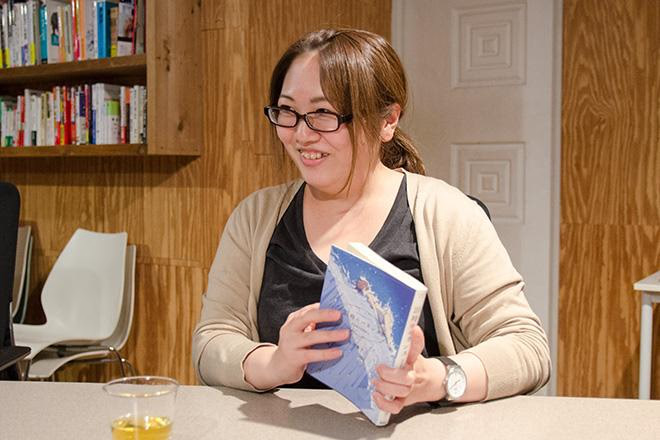
-
 村上
村上 -
宝石の国のひとかー。『宝石の国』も途中までしか読んでないけど面白いですよね。このお話はなんで貝なんだろう。
-
 乾
乾 -
市川春子さん、面白いですよね。今いちばん好きです。市川さんの漫画って『宝石の国』もそうですけど、石とか貝とか、変わった生物や自然のものがよく出てくる気がしますね。
-
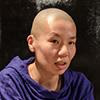 和田
和田 -
貝は身体から出てきて移動とかもできるんですか?
-
 乾
乾 -
はい。弟のフードに入ったり。そのへんはもうファンタジーで。おとめちゃんの身体が貝殻みたいな感じなんです。身体からちょっと出てきて「クリームかけましょ?」とコーヒーの牛乳を入れちゃったり。
-
 和田
和田 -
その声は普通の人には聞こえないんですか?
-
 乾
乾 -
聞こえちゃってます。会社の人たちにもバレちゃうんです。ちょこちょこ貝たちが話して、「静かにして」っていわれて「はい」って言ったり。「お構いなく」とか言ったり。そんな、もぞもぞ喋ってる貝たちがかわいいんです(笑)
魂がのたうちまわる 遅咲きの作家の物語り
『赤目四十八瀧心中未遂』(紹介者 和田 亜也)

車谷 長吉(著)『赤目四十八瀧心中未遂』文藝春秋 (2001/2/1)( Amazon )
-
 和田
和田 -
『赤目四十八瀧心中未遂』という小説を持ってきました。
水とか、雨ということで何にしようか悩んでたんですが、タイトルに瀧もあるのでこの本にしました。車谷長吉という方が作者です。この作品で直木賞をとって、2年前に69才で亡くなられました。今のところ、私はこの作家さんが一番好きな作家で、この小説がきっかけで知りました。これまでの作品もほとんど読んでるんですが、この方は自分の生活や生き方などを、私小説として書かれる方です。
『赤目四十八瀧心中未遂』はフィクションなんですけど、主人公の男の人は自分をモデルにしています。はじめは広告会社で働いていて、辞めて東京で働いて無一文になって地元に帰って。調理師の免許をとって、板前さんをして色んな所を転々とするんです。
例えばヤクザのような人がいっぱいいるような町の汚いアパートの一室で、焼鳥の串とかモツとかをずっと刺す、一日中、生肉が運ばれてきて刺すっていう仕事をしたり。そのときの周りの人との関わりや、仕事を斡旋してきたおばちゃんとのやりとりが書かれてる。そしてそんな町で知り合った女性と心中未遂をするというストーリー。
実際に車谷さんも本当は小説家になりたくて、でもなかなか書けなくて大阪や京都、尼崎とかを転々として。でも出版社の方に「書くのを諦めるな」みたいに言われて。40代前くらいにもう一回東京に出て、『赤目四十八瀧心中未遂』をなんとか書いて。
やっとこの作品で直木賞まで行くんです。それまでの人生の苦悩や生きてきた道、そのときどきの思いが文章で表現されていて、ちょっと独特の文体です。小説で何回も読むって私は少ないんですけど、この本は何回も読んでます。魂がこう、のたうち回るような文体で、私はすごく惹かれてしまって。この作家さんがとても好きなので、亡くなられて本当にショックでした。
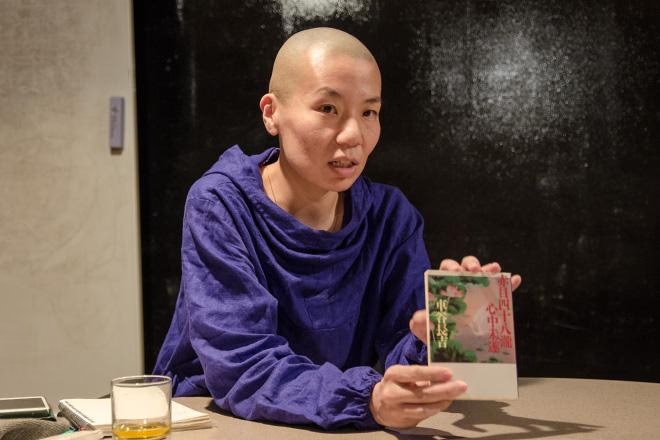
-
 村上
村上 -
密度が濃そうですね。
-
 和田
和田 -
そうですね、でもこれはまだ結構読みやすいほうです。実際、この赤目四十八瀧っていうのは三重県にある滝で、そこまで逃げていこうっていうことになるまでのお話なんですけど、もう心中のシーンとかはもうどうでもよくて、そこまで行くまでのこの人の生きざまがすごくて。グイグイ読ませる感じです。
好まれるようなものを書くよりも自分の思うことを書いていきたい人というイメージがあります。
-
 村上
村上 -
40近くでまた書きはじめようって思うのもすごいですよね。
-
 和田
和田 -
そうですね。30代後半くらいでもう一回小説を書こうって決めて、でもすぐにはいい作品が書けなくて苦労しながら、仕事をしながら書いて。
奥さんが高橋順子さんという詩人の方で、『夫・車谷長吉』っていう、旦那さんについて書いた本を出してて、それを最近読んだんですけど、この小説を書いてるときのこの人の家での状況とか裏話が書いてあって、それも面白かったです。
寺島しのぶさんがヒロインで、映画化もされてます。映画はちょっとヤクザっぽいVシネ系なんですけど、映画も良いです。
忘れた気持ちを思い出す
少年たちが海で繰り広げるサバイバル
『十五少年漂流記』(紹介者 村上 伊左夫)
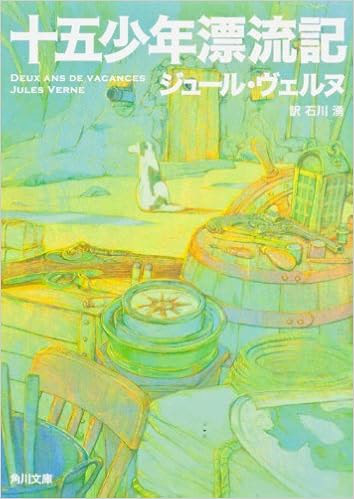
ジュール・ヴェルヌ(著)『十五少年漂流記』角川書店(2012/6/25)( Amazon )
-
 村上
村上 -
ジュール・ヴェルヌの『十五少年漂流記』です。 ジュール・ヴェルヌを私が最初に知ったのは多分、アニメ『ふしぎの海のナディア』だと思うんです。あの作品は彼の『海底二万マイル』が原作で、それでこの作家を知りました。
『十五少年漂流記』はまだ読んだことがなかったので、この機会にと思って、ブックオフで買ってきました(笑)。まだ、最初の方しか読めてないんですけど。前に読書会でおすすめした齋藤孝さんの『読書力』っていう本で、100冊くらいオススメの本が挙げられていて、その中に入ってたんです。それもあって。
10歳から、15歳くらいの15人子どもたちが、ニュージーランドからヨットで太平洋を漂流して、無人島に流れ着いて…というのが物語のはじめで。
子どもとは言え、出身や境遇の違う人が15人もいたら、派閥というか、グループができる。 フランス人が数人、イギリス人が殆どで、黒人の水夫見習いの子が1人。 フランス人の子がリーダーのグループと、イギリス人の子がリーダーのグループと、その間を調停するような役目の子がいたりして。ちゃんと役割が分かれるんですよね。
そういった子どもたちが無人島に流れ着いてサバイバルしていく。 船の知識や生き残るための術も十分じゃないけど、誰も助けを望めない状況で問題に立ち向かっていく力強さというか勇気というか、挑戦する心とか。大人になって忘れていたような気持ちを思い起こさせてくれる物語だと感じました。
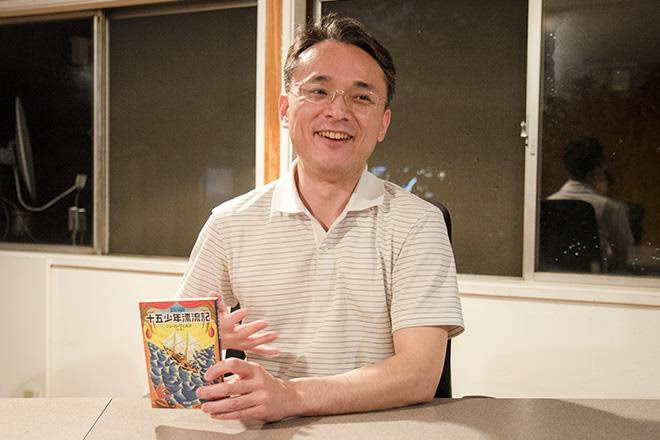
-
 羽賀
羽賀 -
男心をくすぐる物語ですね。でも15人もいたら名前覚えるの大変そう。
-
 村上
村上 -
はい、大変でした(笑)。 フランス人のリーダーの子と、イギリス人のリーダーの子の名前が微妙に似ていて。フランス人の子がブリアンで、イギリス人の子がドニファン。 読んでると、時々どっちだったっけ?と。前後の文脈からこっちかな?とか。覚えきれないですね。
-
 羽賀
羽賀 -
子どもたちはどんな問題を乗り越えていくんですか?
-
 村上
村上 -
最初はヨットが嵐に揉まれて、海に落ちそうになったりマストが飛ばされたり。 陸地が見えてきてもなかなか上陸できなかったりとかして。一つ一つをクリアするのに、すごい道のりがあって、それぞれで物語が盛りあがるようになっていて、どの場面でも楽しめるようになってます。
カヤックで一人氷河を目指す 写真家の撮影日記
『氷河日記 グレイシャーベイ』(紹介者 羽賀 敬祐)

石塚 元太良(著)『氷河日記 グレイシャーベイ』TIME CREVASSES(2012)( Amazon取り扱いなし)
-
 羽賀
羽賀 -
僕が紹介するのは、石塚元太良さんという方の『氷河日記 グレイシャーベイ』という本です。石塚元太良さんは写真家なんですが、アラスカにある氷河をカヤックに乗って撮影をしに行って、その時の日記と写真が本になったものです。
カヤックに乗って氷河を撮りに行くんですけど、そもそもこういう場所に行くこと自体が困難なんですよね。まず安全に向かえるかを確認するところから始まるんです。氷河に近い町まで行って、そこからセスナに乗って、氷河が撮れるかを確認をするだけで何日も費やして。でもいざ天候にも恵まれてセスナも飛んで行けるとなったときに、恐怖心に襲われるんですよね。何日間もかけて1人で海を渡って行くことの葛藤とか恐怖心も素直に綴ってあるんです。
氷河には一人乗りのカヤックに1週間か10日分ぐらいの食料などを積んで1人で漕いでいくんです。 印象的な話がいくつかあって。一つは雨の日にテントを張って夜を過ごすんですが、真っ暗なテントのなか、遠くからクジラの鳴き声が聞こえてくる。雨が降ってるからか、すごく風情がある描写なんです。野生のクマと出くわしたときはちょっと叫んでみたり、威勢張ってみたりとかして。結局無事だったんですけど。怖いけど面白いなと思って。
氷河は地球温暖化の影響で、この何十年の間に何十キロも後退してるみたいなんです。氷河が崩れたときに見せる青い部分が、長くかけて作られた氷河ほど、色が濃くてきれいで。
実際行ってみないとスケール感がわからないと思うんですけど、横に700メートルぐらいある氷河の塊も撮影していて。こういう氷河にも足を踏み入れて奥まで入って撮影するんです。こんな世界もあるんだなって、行ったような気分になれる素敵な本です。
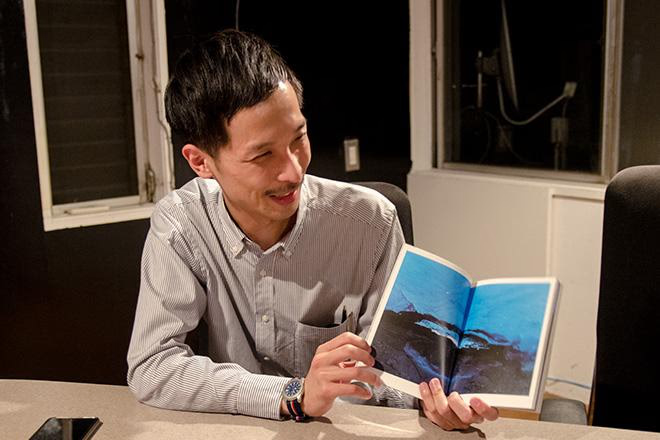
-
 和田
和田 -
テントを張った場所には緑もあるようですが、氷ばかりではないんですね。
-
 羽賀
羽賀 -
はい。夏にアラスカに訪れていて、氷河は一部の場所なんです。そこまでは入江が入り組んでいて、島とか岬にテントを張って進んだようです。
-
 村上
村上 -
人生観変わりそう。クマに会うってすごいな。
-
 羽賀
羽賀 -
いざ自分がとなるとゾッとしますよね。でも日本食を持って行って、断崖絶壁のところや洞窟でカレーうどんとかを食べるんです。日本食の良さを噛み締めてる日とかもあります(笑)
-
 和田
和田 -
カヤックで、一人でゴロンってひっくり返ったらどうするんだろう。
-
 羽賀
羽賀 -
怖いですよね。死が隣り合わせ。でもそういう恐怖も書かれていますが、氷河を撮影できたときの喜びも綴ってあって、恐怖を乗り越える理由が納得できるんです。
読書会をおえて
水をテーマにした読書会。
都会の地下をひっそりと流れる川や、流転の人生の果てに行き着く瀧。何百年も時間をかけて作られる雄大な氷河まで。
人が生きていくためになくてはならない水は、天からの恵でもあり、脅威にもなり得る、改めていく通りもの姿を持っていることを感じたひとときでした。
もう少し雨が降りますように。
次回は「自分的夏の課題図書」の予定です!
